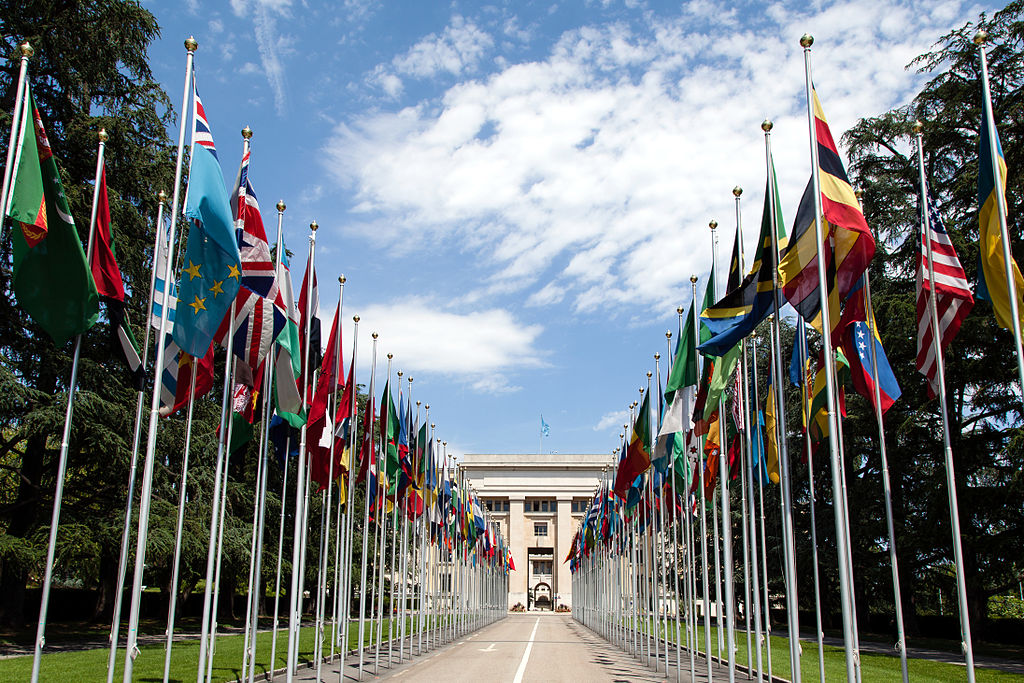
In the broader debate over the nuclear ban treaty and whether it’s a good or bad thing, there are a couple of ‘wrinkles’ that merit attention. Those wrinkles concern current US extended nuclear deterrence arrangements, and the list of potential future nuclear-weapon proliferators. In both cases, it’s a matter of what can and can’t be read into the final voting list (PDF) at the recent UN negotiations.
Let’s start with extended deterrence. At the moment, the US extends a nuclear guarantee to a bunch of states worldwide. The exact number isn’t clear. Sometimes it’s described as ‘nearly 40’ and sometimes just ‘more than 30’. And there’s no publicly available official list of the states that have received such an assurance.
But there are occasional hints about which states do and don’t enjoy that status. One such hint emerged in the formal press statement issued by the US State Department after the conclusion of the UN negotiations on the nuclear ban treaty. Keen to argue its case that the treaty ‘ignores the current security challenges that make nuclear deterrence necessary’—an argument for which I have some sympathy—the State Department observed that ‘no state that possesses nuclear weapons participated in these negotiations, and no US ally that relies on US extended nuclear deterrence supported the final text’.
Well, 122 states supported the final text. One (Singapore) abstained, and one (the Netherlands) voted against. Thailand and the Philippines are listed among the 122 supporters. Both are formal US allies. For the State Department’s press statement to be true, we’d have to conclude that the US does not extend a nuclear assurance to either of its Southeast Asian allies. Parsing the exact language used in the statement, it might be possible to argue that the US does extend such an assurance but that neither Thailand nor the Philippines ‘relies’ on it. Frankly, that seems to me to be a less likely interpretation, and the phraseology itself is probably the result of sloppy drafting.
There’s one other aspect of the press statement that should be noted. The exact wording is that no ‘ally’ that relies on extended nuclear deterrence supported the final text. Generally, when the US talks about extended nuclear deterrence it talks about something that it extends to ‘allies and partners’. So it’s possible that some countries that might be better described as ‘partners’, and which do benefit from some form of nuclear assurance, may have voted for the final text. It would be a matter of speculation about which countries might be included under that rubric—though it certainly wouldn’t be a long list. The great bulk of US extended nuclear assurances covers the 29 members of the NATO alliance, plus Japan, South Korea and Australia. The ‘partners’ are generally thought to be Middle Eastern states.
Let’s turn to the second issue. Does the nuclear ban treaty in any way change the list of potential future proliferators? Among the treaty’s supporters are a number of states that might be regarded as ‘threshold’ nuclear powers—that is, as countries which might build nuclear weapons given a set of circumstances sufficiently compelling. If we quickly scan the UN voting results, those include (in alphabetical order) Algeria, Argentina, Brazil, Egypt, Iran, Iraq, Saudi Arabia and Sweden. Alongside that list, I suppose we ought to mention South Africa, which has previously built nuclear weapons and since given them up. And perhaps we shouldn’t entirely overlook Myanmar, Indonesia and Vietnam—all possible proliferators in a much darker Asian strategic environment.
Have all those states walked away from the nuclear option? No. That’s because of Article 17:2, reproduced here:
Each State Party shall, in exercising its national sovereignty, have the right to withdraw from this Treaty if it decides that extraordinary events related to the subject matter of the Treaty have jeopardized the supreme interests of its country. It shall give notice of such withdrawal to the Depositary. Such notice shall include a statement of the extraordinary events that it regards as having jeopardized its supreme interests.
In short, in the face of serious security threats, signatories are free to desert the treaty and run back to the safety of (grossly immoral) nuclear deterrence. Article 17 was the subject of heated debate during the closing sessions of the treaty negotiations. But without its inclusion, several states might not have supported the final text.
I don’t want to suggest that any countries supporting the ban treaty are doing so in bad faith. Indeed, the only thing that’s been voted on so far is the final text. The treaty won’t open for signature until September, and won’t enter into force until 50 states have ratified it. But we ought to remember that the ban treaty is not an automatic guarantee of a less densely proliferated world. Several states with some history of involvement with nuclear weapons are currently listed as supporters of a ban. In the long run, geopolitical factors might determine whether they really are—and, if so, for how long. North Korea, remember, used to be a member of the NPT.

